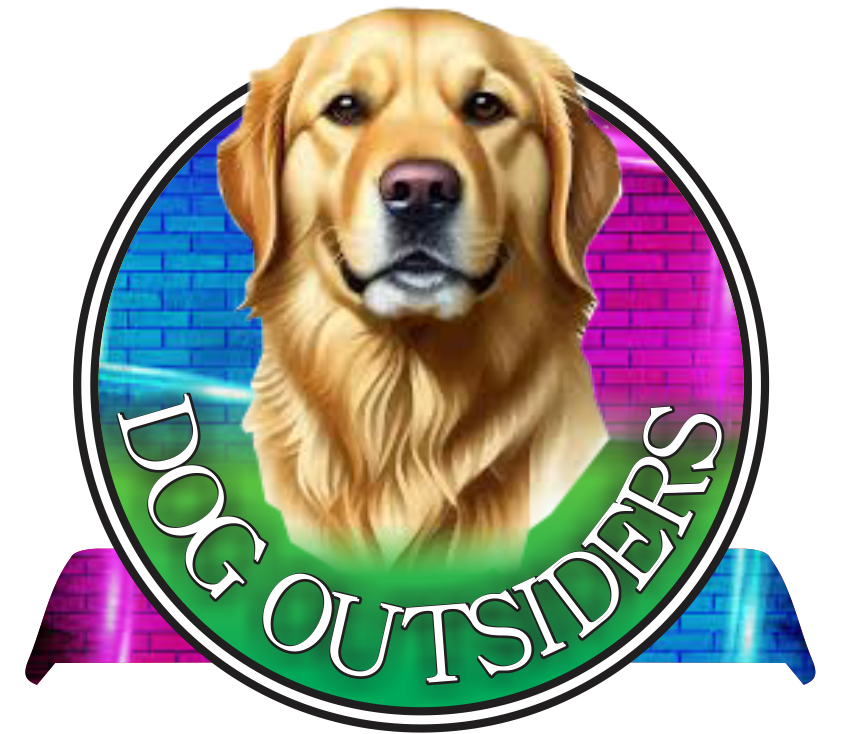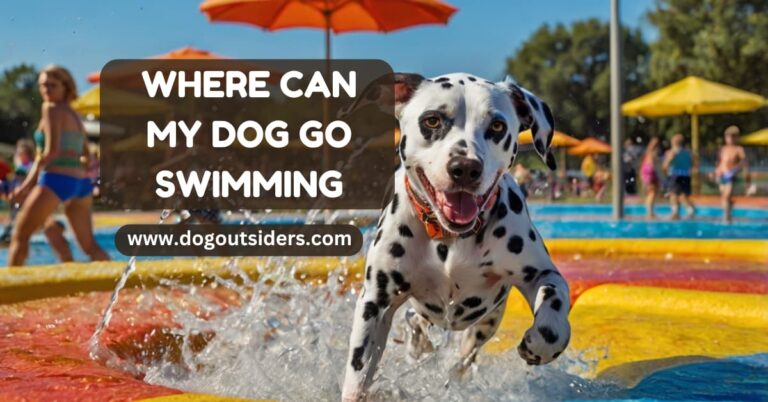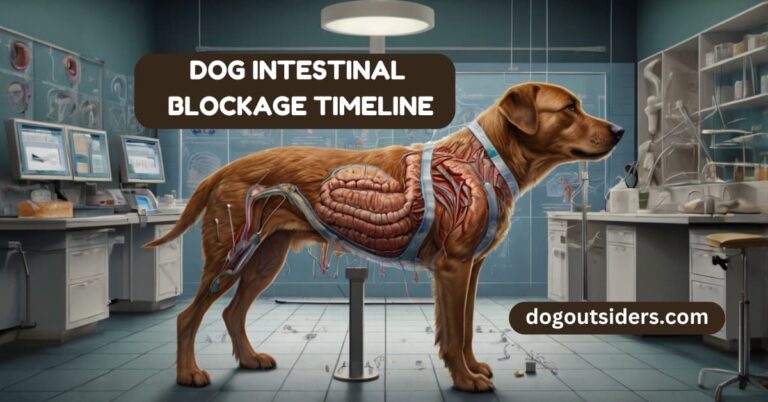Did you know that as many as 85% of dogs could eventually develop an ACL? It’s hard to watch a furry friend in pain. I’ve been there, watching my own dog limp sadly around the house. Knowing when it’s time to say goodbye is never easy. This is when assessing the severity of the injury and your dog’s quality of life becomes critical. Treatment options, such as surgery or therapy, can help, but they aren’t always a fix. I had to weigh the costs, the pain, and the success rates. Sometimes the hardest choice is the best choice. It’s about what’s best for your faithful friend. Stick with me as we dive into the signs and solutions. Together we can work through these difficult choices with love and care.
Key Takeaways
- When your dog has an ACL tear, it helps to understand it. It affects their mobility and quality of life, as it does in humans.
- Before making a decision, consult a vet to explore all options of treatment, from surgery to alternative therapy.
- Weigh your dog’s overall health, age, and ability to recuperate when considering euthanasia. It is a personal decision, and one that is different for every pet parent.
- Left untreated, an ACL injury will worsen, causing pain, arthritis, and more complications that affect your dog’s quality of life.
- Always think about how treatment costs will affect your choice. Consider your potential dog’s recovery, happiness, and comfort as well.
- Talk openly with someone who knows what they’re talking about. Take a look at your options together, and make an informed, compassionate choice about what’s best for your furry family member.
Deciding on Euthanasia for a Dog With an ACL Tear

Assessing the Dog’s Pain and Suffering
It helps to know what it looks and feels like to have a torn ACL, or a cruciate ligament injury, if you want to understand your dog’s pain. This understanding enables you to provide optimal care for your pet. I had to think about this with my own dog once, and it was heartbreaking.
You want to watch out for signs like persistent limping, whimpering, or loss of appetite, as these are huge red flags indicating that your dog may be suffering from a serious condition. If your dog can’t even get up to greet you at the door, it could be in significant pain.
The signs of depression might suggest that the discomfort is severe enough to concern a pet owner. I remember discussing this with a vet who advised, “Watch their tail. A dog in pain won’t wag it much.” It’s crucial to consider how these symptoms affect your dog daily, as untreated ACL injuries can lead to chronic lameness and poor recovery.
Considering Overall Health, Age, and Quality of Life
Age is another important factor to consider when evaluating dog ACL surgery options. Older dogs may not recover as quickly from a cruciate ligament injury, and many dog owners face the difficult decision of whether to proceed with surgical treatment options.
I had a senior dog who simply could not handle the stress of surgery. It’s not just age; it’s also about how your dog’s life is day-to-day. Are they still enjoying their time outside? If they can no longer play with their favorite toy, it may be time to discuss dog ACL surgery alternatives with your vet.
Keeping a “quality of life” checklist that notes your dog’s mobility and happiness can provide concrete examples during these conversations.
Evaluating All Treatment Options
Before you jump to any conclusions regarding your dog’s condition, it’s essential to explore all the dog ACL surgery alternatives available. Surgery is one option, but not the only one for treating a cruciate ligament injury.
- I chose physical therapy and pain management for my dog, which worked for a while and gave us more time together. Consulting your vet about the best treatment options for your dog is crucial. Some pet owners opt for surgical procedures, while others find relief through medications and lifestyle changes.
- A friend of mine tried acupuncture, which worked wonders, showcasing the effectiveness of alternative treatments.
Discussing Financial Implications
Let’s talk money regarding dog ACL surgery and its costs. Veterinary care can get pricey, so you should familiarize yourself with what you’re up against. I recall having a lengthy discussion with my vet about costs associated with surgical options for cruciate ligament injuries.
Surgery may run into the thousands, but persistent medical management still racked up expenses. Don’t be ashamed if you have a low budget; your vet can offer dog ACL surgery alternatives or payment plans.
It’s not just what you can afford financially, but also emotionally. I slept at night knowing I made an informed decision that considered all angles.
Understanding an ACL Tear in Dogs

Recognizing the Injury
Let’s discuss the torn ACL, or more properly, the cranial cruciate ligament (CCL) in dogs, a common injury that can lead to serious conditions if untreated. This particular injury is similar to the ACL in humans, as it can occur when dogs twist or overextend their knees, especially during activities like running or jumping.
Sometimes, it’s not even a significant accident; years of wear and tear contribute to this issue. For active dogs, even a minor slip can result in a cruciate ligament tear. Additionally, overweight dogs face increased risk due to the added stress on their knee joints.
Pet owners should monitor their dog’s weight and consider dog ACL surgery alternatives or conservative treatment modalities to support recovery and maintain their furry friend’s mobility and overall health.
Causes of ACL Tears
What exactly causes these cruciate ligament tears? There are a few usual suspects here.
Trauma is a big one — think your dog taking a tumble or landing in a weird way. It isn’t always so dramatic; degenerative conditions, which are slow changes in the knee joint over time, can also be a source of a tear.
If your active dog is older or a bit on the heavier side, they’re at higher risk for a cruciate ligament injury. It’s kind of a concern, right?
Did you know that dogs have a very high risk of injuring their other CCL? If a dog rips one, he’s got a 30-50% chance of ripping the other one in a couple of years! It is the double whammy, for sure.
Impact on Mobility
An ACL injury, particularly a cruciate ligament tear, can significantly slow your dog down. You may notice them limping or struggling to get up, which affects their mobility and turns cheerful daily strolls or games of fetch into a challenge.
Activities like climbing stairs or jumping on the couch become increasingly difficult. However, here’s the silver lining: recovery from a dog ACL surgery or its alternatives is quite common. With proper care and attention, many dogs bounce back to their old selves, regaining their active lifestyle.
Types of ACL Injuries
Let’s dissect it a little bit further regarding cruciate ligament injuries, which are common in dogs. There are also different types of ACL injuries, including partial tearing, where the ligament is hurt but not entirely severed, and complete tears, where it’s fully torn.
To diagnose the condition, vets utilize tests such as the “drawer sign” or the tibial compression test, which help determine the stability of the knee joint and the appropriate surgical options for treatment.
When Should You Consider Euthanasia for an ACL Tear?

Monitor for signs of severe, unmanageable pain that affects the dog’s quality of life
When it comes to our furry friends, one thing I’m always watching is their pain levels, especially if your dog is suffering from a cruciate ligament injury. If they have unmanageable pain due to an ACL tear, it’s crucial to assess their quality of life and evaluate how their condition interacts with their overall happiness.
Dogs in pain often whine, limp, or show signs of discomfort, avoiding activities they used to enjoy, such as chasing a ball or going for walks. It’s painful to witness such heartache. When conservative treatment modalities and canine rehabilitation fail to provide relief, discussing dog ACL surgery options with a licensed veterinarian may become necessary to ensure they remain happy and pain-free.
Evaluate if the dog has stopped eating or drinking, indicating a decline in health
One big red flag I look for is if a dog has stopped eating or drinking, which is a clear indicator their health is on the decline, most times. With a cruciate ligament injury, some dogs may become less hungry as they adjust to the discomfort and stress of the dog ACL surgery.
If your dog has been refusing to eat or drink for too long, take it seriously, as this behavior might signal that they’re struggling more than they can say. I weigh those options with a vet, discussing various surgery options and whether the ACL tear is causing more damage than it should. Sometimes, no matter what we do, their health doesn’t come back, and that can be hard to stomach, but it’s important to accept.
Assess the dog’s ability to perform basic needs like walking or getting up.
It’s heartbreaking to watch your dog struggle with simple tasks such as walking or standing due to a cruciate ligament injury.
A torn ACL can severely affect mobility, causing them to drag their hind legs, struggle to climb stairs, or completely refuse to get up. If they can’t perform these basic needs, it signals that they are not well overall.
While dog ACL surgery is an option, it’s not suitable for every dog or pet owner. When mobility can’t be restored, the decision regarding surgery alternatives becomes even more critical, especially when quality of life is on the line.
Consider the prognosis for dogs with ACL injuries in both hind limbs, which may be poorer.
For the unlucky dog with cruciate ligament injuries, particularly ACL tears in both hind limbs, the prognosis can be quite grim. While dog ACL surgery is frequently necessary, the recovery process is long and arduous.
For certain dogs, even with surgical options, the road to stability can be bumpy. Left untreated, ACL injuries may lead to chronic lameness, but pain management and canine rehabilitation can help ease discomfort.
If both legs are affected, their comfort and quality of life could suffer greatly. Here, I carefully weigh the pros and cons of various treatment options, always prioritizing my pup’s best interests.
Exploring Treatment Options for Canine ACL Injuries
Surgical Repair for ACL Tears
When it comes to surgical repair for ACL tears in dogs, there are several techniques. Common procedures include TPLO (Tibial Plateau Leveling Osteotomy) and TTA (Tibial Tuberosity Advancement).
Both aim to stabilize the knee, restoring function and reducing pain. For large breeds, particularly those over the age of four years, surgery is frequently advised. My Newfoundland had procedures on both knees. Four years later, his knees feel only slightly older and not at all surgically altered.
Potential benefits of surgery include better mobility and substantial pain relief. It’s important to talk to your vet about recovery expectations. Your dog may need a few weeks to months to fully recover depending on the procedure. Post-op care is critical: pain management, maintaining cleanliness, limiting activity. Risks such as anesthesia complications should also be discussed with your vet.
Rest and Restricted Activity
Strict rest can be critical during recovery, and that includes keeping smaller dogs calm during the healing, as some dogs could have had conservative treatments. This method usually requires limiting activity to avoid further injury.
Using crates or confined spaces effectively limits your dog’s movement. This method is particularly helpful if you have multiple dogs in your house. Slowly reintroduce activity as advised by your vet. My lab, who loves playing with her cousins, had to learn some patience, but it was worth it when it showed in her healing.
Rehabilitation Therapy
Rehabilitation therapy provides another layer of healing. Options like physical therapy or visits to canine rehab facilities can help. Exercises and stretches that focus on the affected leg help build strength and improve mobility.
Hydrotherapy, a personal favorite of mine, provides gentle resistance without taxing joints. Certified rehab therapists are able to create a plan that is tailored to your dog’s needs. Remember Tumble, whose owners were over the moon with how he was six months post-injury? That’s the power of a complete rehab plan.
Non-Traditional Treatment Methods
Alternative therapies can complement traditional treatments. Acupuncture and chiropractic care are growing in popularity for their benefits. Orthopedic braces may support an injured knee, while joint health supplements and anti-inflammatory meds can help.
Holistic approaches — such as controlling weight through diet and natural remedies — tend to offer added comfort. My vet assesses lameness by letting dogs trot around the parking lot. This mimics show rings and gives a better picture of their movement problems.
Consequences of Leaving a Dog’s ACL Untreated
Recognize Chronic Pain and Lameness
Left untreated, a dog’s ACL injury causes chronic pain and lameness. I’ve witnessed it from the dogs who couldn’t even place weight on the injured leg, who winced with every step. This pain only gets worse without treatment.
Just imagine if every day you tried to walk with a sprained ankle. Over time, that constant discomfort can take a serious toll on your dog’s quality of life. Trust me, it’s not what you want for your furbaby. They may quit playing fetch or even refuse to go for a walk, things they used to enjoy.
Risk of Arthritis and Joint Issues
There’s a high risk of developing arthritis or other joint problems if you leave an ACL injury untreated. When the joint is unstable, it wears down and becomes inflamed. Ongoing inflammation can lead to degenerative joint disease.
Simply put, this means that the joint is slowly deteriorating. Kind of like a rusty door hinge, it just doesn’t move smoothly anymore. Dogs may appear stiff or even avoid using the leg altogether, which is a major red flag.
Muscle Atrophy and Decreased Mobility
Another thing I saw was muscle atrophy, where the muscles shrink from lack of use. Because dogs do not want to put weight on the affected leg, the muscles in that leg can atrophy and become very thin.
It’s heartbreaking to see this lessening of mobility. Once active and energetic, they may cringe at standing up. It’s like a marathoner suddenly unable to climb stairs.
Emotional Impact on the Dog
Apart from the physical toll, there’s an emotional side to factor in. Pain that lasts a long time can cause dogs to be sad or anxious. Imagine being in pain all the time and not understanding why it’s happening.
Dogs might stop being social and refuse to play or interact with others. It’s like they lose a part of their spark, and as a dog owner, that’s tough to see.
Can Dogs Heal Naturally From an ACL Tear?
Assessing the Likelihood of Natural Healing
The natural healing methods will depend on the severity of the tear. Some dogs with minor ACL tears may improve with conservative management, such as rest and anti-inflammatory medications.
Remember, natural healing may not always restore full function or relieve pain. You have to go out and watch and see how they’re doing. Watch for signs of improvement, like better mobility, or any decline, which could mean the injury’s getting worse.
Expected Recovery Time Without Surgery
Estimating the Recovery Timeline
You can expect a longer recovery if you opt for conservative treatment instead of surgery. Recovery times vary, depending on the dog’s age, overall health, and the severity of the injury. Older dogs or dogs with other health issues may take longer to heal.
You’ll need patience, as improvements in mobility and pain levels might be slow. Remember, it’s completely possible for dogs to heal without surgery, even if it may take a little longer.
Evaluating Surgery as a Treatment Option for ACL Tears
Discussing Criteria for Surgery
There are a number of factors that play into whether to consider surgery. You’ll have to balance, for example, the potential benefits of surgical repair, such as increased mobility, against its risks and recovery demands.
Consulting a veterinary specialist can help provide insight on whether surgery is advisable. They’ll take into account your dog’s overall health and any pre-existing conditions that may impact surgical results. It’s a big decision, but sometimes surgery offers the best chance for a full recovery.
Success Rates of ACL Surgery in Dogs
Reviewing Surgical Success Rates
- Fortunately, ACL surgeries have pretty good success rates, with many dogs regaining significant mobility. Factors like age and health status can influence outcomes, so it’s crucial to discuss these with your vet.
- Post-operative care is equally important for a successful recovery. This will include physical therapy and close monitoring of your dog’s recovery. It’s a joint venture between you and your vet to get your dog back on its paws.
Commonly Asked Questions
Recognizing Signs of an ACL Tear in Dogs
If your pup starts limping, pay attention! Any swelling in the leg may be a sign of an ACL tear. If dogs are trying not to put weight on the leg, that’s a major red flag. I do remember I once noticed my dog was less eager to play fetch — which was unusual.
She limped, and I heard a faint popping noise if she moved. These signs may be subtle, but they’re important. Making regular checks of your dog’s mobility can help catch these early. It’s like when you have a sprained ankle; you just don’t feel like running, do you? Your dog feels the same way.
Spotting Early Signs of Cruciate Ligament Injuries
Other times, the signs can be as simple as a slight change in how your dog walks or acts. They start whining more or lick their leg obsessively. I recall that my pup suddenly ceased jumping on the couch—something she used to love to do.
If your dog is off after a run in the park, that’s your cue. Scheduling regular vet visits can be a lifesaver. It’s like going to the dentist; it might not be fun, but it will catch things early.
Preventative Measures for ACL Injuries in Dogs
Keeping your dog’s joints healthy is key. A stable exercise regimen has helped me incredibly. Watch out for exercises that strain their knees. I learned the hard way not to let my dog jump up too much.
Joint supplements can help, as can a balanced diet. Some dog breeds are more prone to ACL injuries, so it’s important to know your dog’s risks. I have found that if I learn about your specific breed’s needs, this can help avoid injury. It’s kind of like childproofing your house; you do it so you keep them safe.
Conclusion
Knowing when to put a dog down due to a torn ACL is difficult. I know the heartache it brings. You aren’t alone. Vets and experts provide that support. Make educated decisions for your furry friend.
Sometimes, the surgery or the physical therapy does wonders. Other times, pain relief is the best you can do. So listen to your dog. Observe their behavior. Are they in pain, struggling? Then, perhaps it’s time.
Don’t rush yourself. Lean on your vet for advice. Family members and friends can help, too. Keep in mind, what’s most important is the comfort of your dog. You love them enough to do what’s right.
Seek help for guidance. You’ve got this.
FAQ’s:
An ACL tear is a common knee injury in dogs. It happens when the anterior cruciate ligament is torn or ruptured. This can cause pain and issues with mobility.
Symptoms may include limping, difficulty standing, and swelling. Dogs might also hesitate to jump or favor one leg.
Some dogs can do very well with rest and rehabilitation; surgery turns out to be the best option. You must consult a vet to develop a suitable treatment plan.
Consider euthanizing if your dog is in pain all the time, can’t walk, or if treatment isn’t affordable or working. Check with a vet for advice.
Treatment options such as surgery, physical therapy, and medication. The best method depends on the age, health, and severity of the tear.
If left untreated, ACL tears can result in chronic pain, arthritis, and loss of mobility. This has a huge impact on a dog’s quality of life.
Keep them at a healthy weight, make sure they get regular exercise, and avoid high-impact activity. Routine vet check-ups can also catch these issues early and aid prevention.






